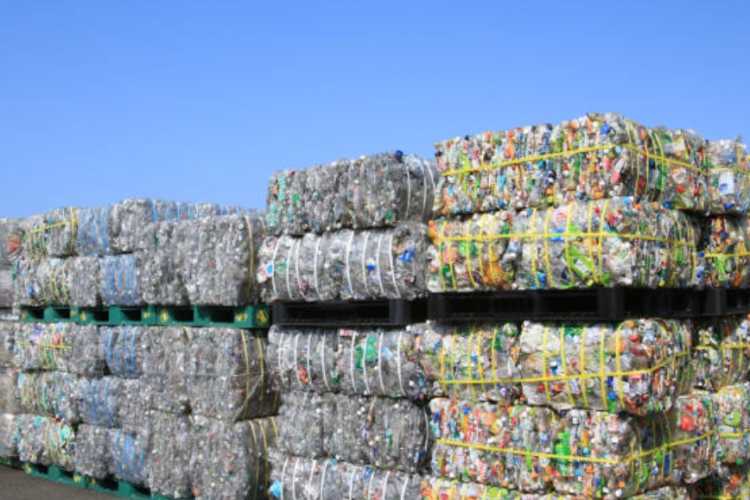
Global plastics treaty: Plastic pollution has become one of the defining environmental crises of our time, yet global consensus on how to tackle it remains elusive. As 179 countries gather in Geneva for the sixth round of negotiations on a global plastics treaty from August 5-14, hopes are high — but expectations remain guarded. The question is whether this round will yield a breakthrough akin to the Paris Agreement for climate change. At the heart of the debate is a contentious proposal: a legally binding cap on plastic production. Backed by over 100 nations, including the European Union, the proposal has met resistance from major petrochemical producers such as Saudi Arabia, Russia, and Iran.
India, a significant stakeholder with a complex relationship to plastics, occupies a pivotal position. Will it support a binding cap, or align with nations pushing for voluntary commitments focused on downstream waste management?
READ | The AI paradox: Innovation without economic growth
India’s reluctance on production limits
India has consistently opposed curbs on the production of plastic polymers. At the fifth session of the Intergovernmental Negotiating Committee (INC-5) in Busan, South Korea, the Indian delegation reiterated its opposition to binding caps, arguing that such restrictions could stifle economic growth. Plastics, it argued, remain vital to sectors ranging from healthcare to aviation.
This position aligns India with fellow petrochemical producers like China and Saudi Arabia, who maintain that the treaty should focus on improving waste management and recycling infrastructure rather than targeting production. India’s earlier submission at INC-4 in Ottawa underscored this view, stating unequivocally that there should be “no cap or binding target” on the production of plastic polymers.
Economic stakes and strategic calculus
India’s stance is shaped by hard economic realities. As global demand for fossil fuels plateaus, the country has doubled down on petrochemical investments. Plastics, derived from these inputs, have emerged as a key export—especially specialty additives and materials used in manufacturing across Europe and the United States.
Restricting production now would have wide-ranging implications. Small and medium enterprises that rely on cheap plastic inputs could face serious disruptions. Industry associations warn that a production cap would create a cascading effect, increasing packaging costs and reducing food shelf life — particularly hurting lower-income communities.
Plastics treaty: Mixed signals on the domestic front
Despite its global position, India’s domestic policies paint a more progressive picture. Since 2021, the government has implemented stringent restrictions on single-use plastics under the Plastic Waste Management Amendment Rules. The nationwide ban covers 19 categories of disposable plastic items, including cups, straws, and certain packaging materials.
States like Tamil Nadu and Madhya Pradesh have taken the lead in promoting reusable packaging and sustainable alternatives such as cloth bags. These moves have stimulated innovation and created employment in green sectors—suggesting that India recognises the grave environmental and public health costs of plastic pollution.
According to The Lancet, plastic pollution contributes to $1.5 trillion in health-related damages annually. India’s own burden is visible: 14 million tonnes of plastic waste are generated every year, choking waterways, harming wildlife, and infiltrating human systems in the form of microplastics.
A health crisis in the making
The health hazards posed by plastics are vast and growing. An estimated 16,000 chemicals are associated with plastics, many of which are linked to developmental and chronic diseases. Microplastics have been found in human blood, lungs, and even livers, raising serious concerns about long-term exposure—especially for vulnerable populations like infants and pregnant women. Studies suggest links to miscarriage, immune disorders, and childhood cancers.
A global cap on plastic production, supported by over 100 countries, aims to tackle the problem at the source. Proponents argue that recycling—currently below 10% of global plastic waste—is not enough to counter the scale of the crisis. Reducing production, they say, is the only viable route to systemic change.
India’s red lines and the path forward
India’s position rests on a key principle: “common but differentiated responsibilities.” First adopted in the Rio Declaration, this principle holds that developed countries, having historically contributed the most to environmental degradation, should shoulder a greater share of the burden. India argues that it cannot be expected to undertake the same commitments without assured financial and technological support.
In practical terms, this means that unless the treaty includes clear provisions for climate finance and technology transfer, India is unlikely to back a binding cap. The fear is that without such support, the economic costs of compliance would fall disproportionately on developing nations, threatening livelihoods and industrial development.
India has thus found common cause with countries like Iran and China, which favour a growth-centric approach over stringent environmental regulation. Meanwhile, the United States—the second-largest plastic producer—has itself moved toward diluted, non-binding commitments, weakening the collective ambition.
It is improbable that New Delhi will shift its stance without substantial concessions. A binding cap, if it is to gain India’s support, must be accompanied by a detailed framework for implementation in developing economies. This would include access to green technologies, funding for transitions in affected industries, and flexibility in timelines.
Until then, India is likely to maintain its current posture—resisting global mandates while continuing incremental reforms at home. In doing so, it underscores the larger dilemma facing many developing nations: how to reconcile environmental responsibilities with economic imperatives. The outcome in Geneva may well hinge on whether the treaty can bridge that divide.
